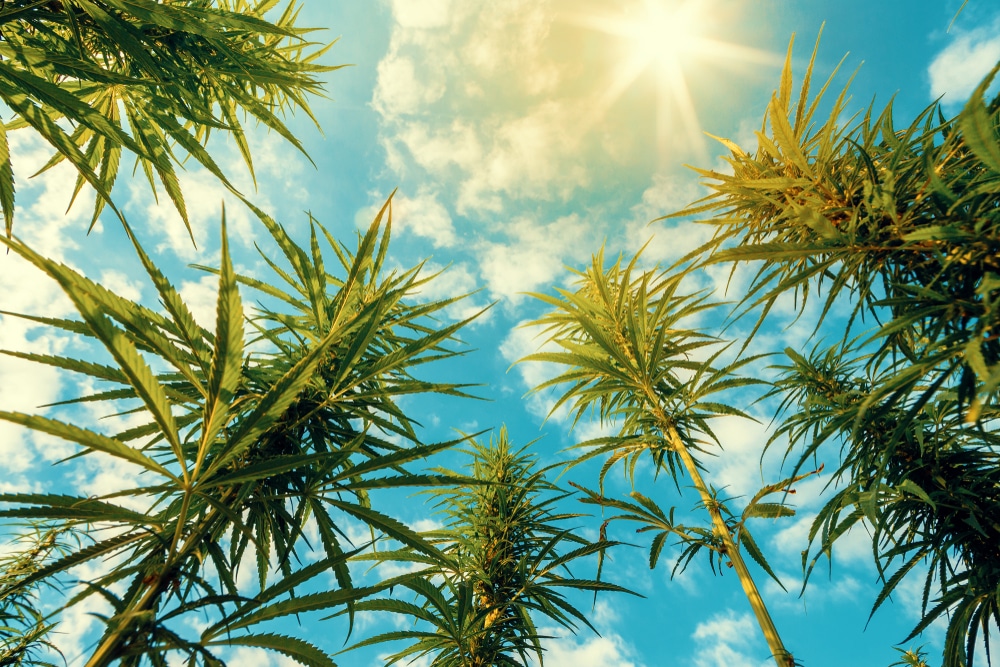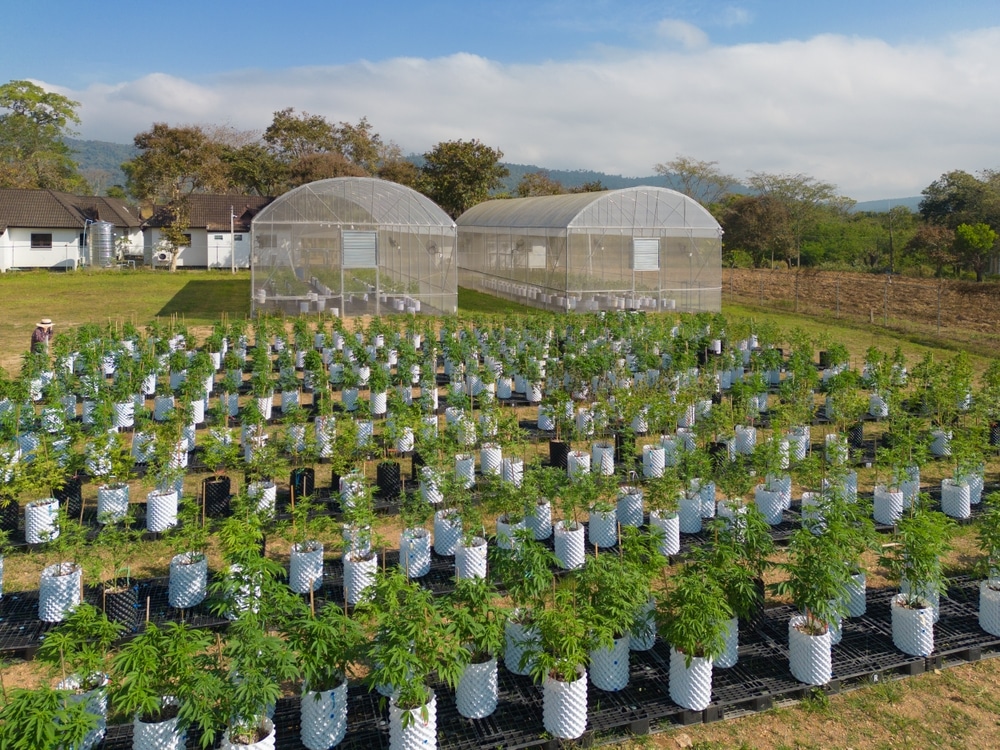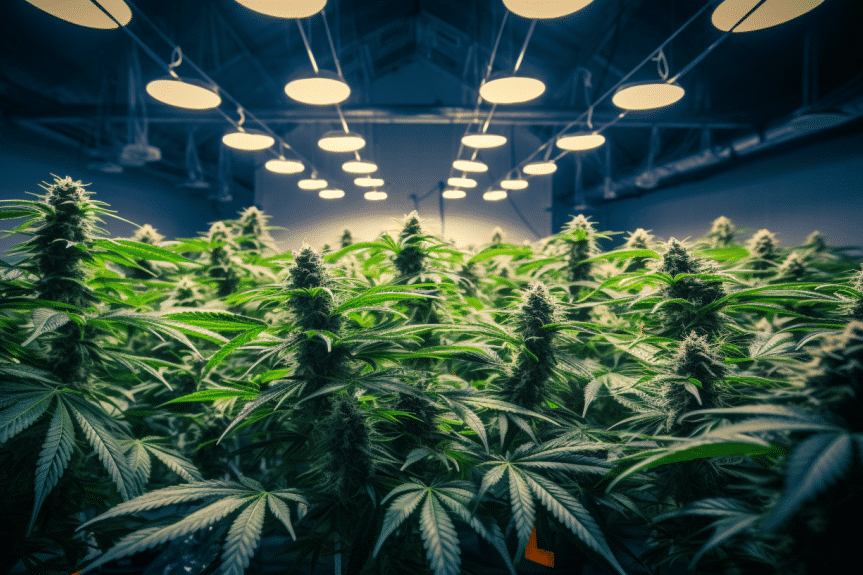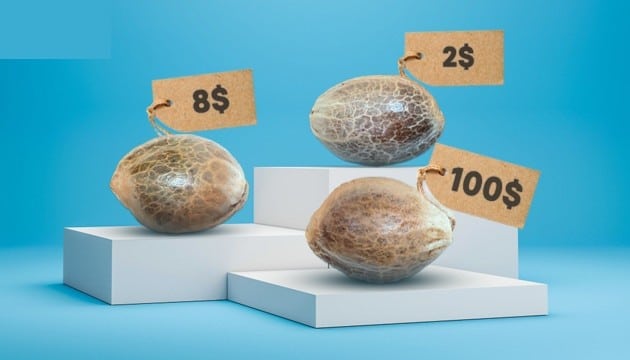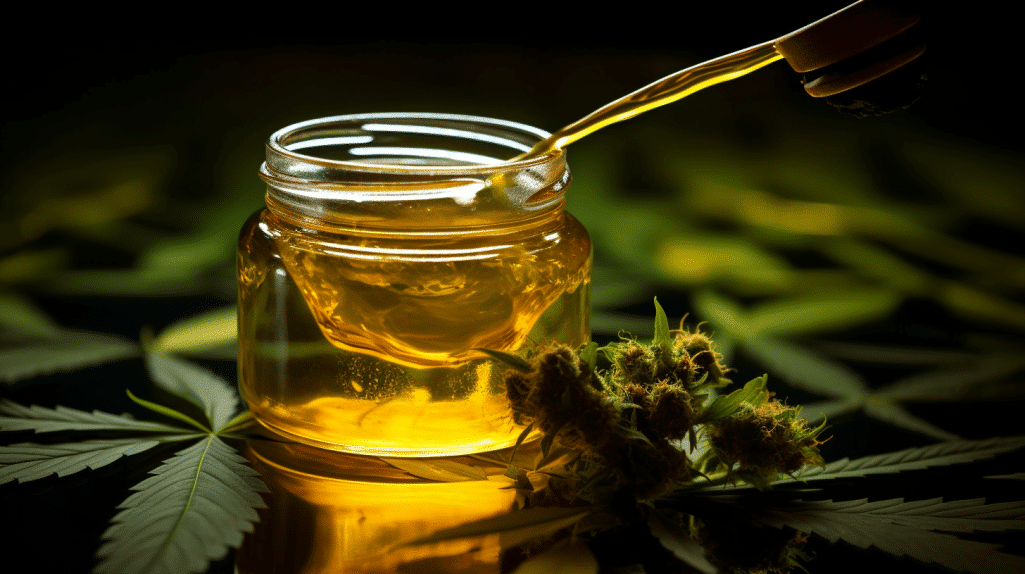No products in the cart.
Marijuana Education
Weed Seedlings Turning Yellow: Identifying Causes and Remedies for Yellowing Cannabis Seedlings
Are your weed seedlings turning yellow? As a plant parent, it can be worrying when you spot drastic changes in your cannababies. The good news is most of the causes are treatable.
Read on as we unpack the possible causes and treatment options for yellow cannabis. We’ll also give you tips to maintain the perfect environment and prevent these issues. Let’s get started.
Understanding cannabis seedling development
Marijuana seeds are the starting point of all cannabis plants. They develop on the buds of polinated female plants. You usually spot them 4–6 weeks after pollination.
Regular cannabis seeds are hardy and survive for long periods in cool, dark places. They usually remain inactive until they’re placed in sunlight and given water. Let’s discuss more about the seedling stage.
The seedling stage in cannabis plant growth
During the seedling stage, cannabis plants are most fragile. Handle them with care and ensure they receive around 18–24 hours of sunlight. Keep humidity levels lower and maintain moist soil.
Seedlings start the process of developing traditional 5–7 finger cannabis leaves. The initial foliage reaches up to 4 inches, and it has a vibrant green color. It’s essential to protect seedlings from harsh elements, high humidity, and pests,
Key factors influencing seedling health
Many factors play a role in creating healthy cannabis seedlings. Here are some of the elements to look out for:
- Temperature: Keep things around 65–75° F to help seeds sprout and develop healthy foliage.
- Light: Indoor growers should follow an 18/6 cycle and use blue CFL bulbs to help seedlings in the first 10–14 days.
- pH: Soil mediums require 6–6.8 pH and 5.5 to 6.5 pH for soilless growing.
- Relative humidity (RH): Levels between 65 and 70% prevent mold growth while keeping adequate moisture levels in the air.
- Germination technique: The paper towel method is the best germination technique to give seedlings a healthy start.
- Seed depth: Plant the seeds around 0.5–1.5 inches deep for best results.
Signs of healthy and unhealthy seedlings
Healthy seedlings have a vibrant green color thanks to chlorophyll, which is essential for photosynthesis. They’re short and develop a set of cotyledons (rectangular leaves) which later develop into jagged-edged foliage.
If you spot weed seedlings leaves turning yellow it’s a sign of troubled plants. The foliage may appear fragile with lanky stems and small leaves. It may also look pale and droopy. Another sign your greenery is unhealthy is if it easily crumbles.
Common causes of weed seedlings turning yellow
Cannabis seedlings are expected to be a rich green shade, so when they start yellowing it can be worrying. Here are some of the possible causes ranging from easily fixable to throw-the-whole-plant-away:
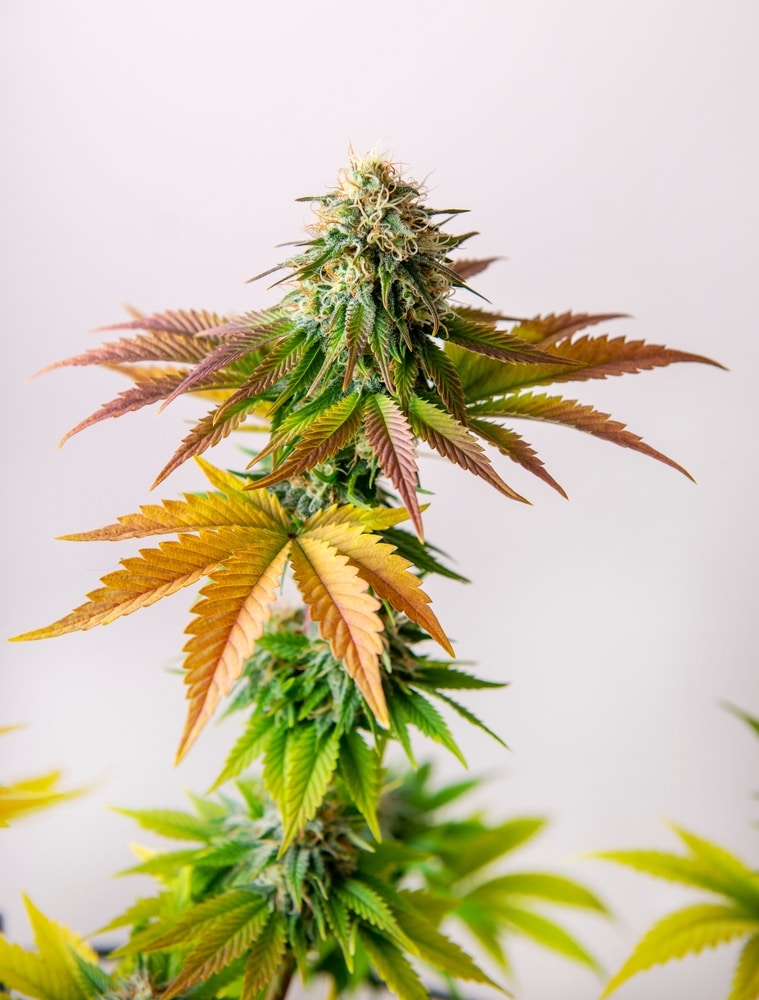
Nutrient deficiencies
Nutrient deficiencies can cause serious problems for cannabis greenery, but the good news is they’re easy to treat when detected early. They cause the plant to focus attention away from the newer leaves, resulting in pale or yellow hues.
Nitrogen deficiency
Nitrogen is a necessary compound to promote chlorophyll. Insufficient levels make the upper leaves absorb it from the bottom foliage in order to successfully perform photosynthesis. This process leads to weed seedlings’ leaves turning yellow as they lack chlorophyll.
Other macronutrient and micronutrient deficiencies
Many deficiencies cause yellowing leaves, but nitrogen is the common culprit. A lack of potassium causes lemon-hued tips while a magnesium shortage results in yellow-brown spots on old foliage.
Assessing and addressing nutrient deficiencies
Carefully increase the nutrition in your feeding regimen until you find the sweet spot that resolves yellowing.
If you left the plant untreated for a long time, it’s crucial to flush the soil and then re-nourish with a water-based nutrient formula.
Overwatering or underwatering
It’s easy to overwater or underwater cannabis seedlings. Some growers assume that more water helps them grow stronger, but it can lead to problems like cannabis seedlings yellowing.
Signs of overwatering and underwatering
Overwatered seedlings have drooping and yellowing foliage. You‘ll especially notice them droop after watering. The leaves also curl and appear stretched out. They may develop chlorosis (leaf yellowing) due to a lack of oxygen from suffocated roots.
Underwatered seedlings droop without curling; the soil will be dry to the touch and completely crumbly around 2–3 inches deep.
Proper watering techniques for seedlings
It’s crucial to maintain moist soil without overwatering. Refrain from adding liquid directly onto the stem. Instead, pour in a circle about 3cm in diameter from the cola.
Watering away from the stem promotes growth, as the roots need to stretch outward to find nourishment. It also prevents fluid buildup at the roots, which can cause mold buildup and invite fungi like fusarium.
Fill a spray bottle with dechlorinated water and mist your seedlings around 3–6 times daily. This practice trains them to absorb nutrition through their leaves.
Adjusting watering practices
Watering times depend on the plant’s environment, lighting, grow medium, temperature and hardness. Ensure the soil is well-aerated so it can drain excess fluids. Over time, you’ll become an expert on maintaining optimum hydration.
Root problems
Root issues can cause severe and sometimes fatal reactions for seedlings. It’s crucial to prevent these problems as they could lead to a variety of other health conditions.
Root bound seedlings
Small containers cause rootbound seedlings. If you leave a seed in the same pot, as it grows over time, the roots fill up the bottom and wrap around themselves. It restricts them, resulting in issues like deficiencies, cannabis seedlings yellowing, and droopy foliage.
Root rot and fungal infections
When your plants are exposed to high humidity levels or the roots are waterlogged, they’re prone to root rot. This fungus preys on seedlings easily and attacks the foundation when the greenery is weakened by deficiencies, stress, or disease.
Identifying and treating root issues
If you have rootbound cannabis, it’s essential to transfer your seedlings to a bigger pot or into the ground. This step gives them enough space to spread their roots. To prevent root rot, maintain adequate humidity levels and avoid overwatering.
Additional factors contributing to yellow seedlings
Aside from the common factors that may result in cannabis seedlings turning yellow, here are some other possible culprits:
Inadequate or excessive lighting
If you’re growing indoor cannabis seeds and only the top leaves are turning yellow, it could be because of lighting. Aside from color changes, excessive or inadequate lighting can cause heat stress and burn.
Light intensity and duration for seedlings
Autoflower cannabis seeds typically need around 20 light hours a day while feminized variants require anything from 18 to 24 hours. Adjustable LED lights with a blue-rich setting are perfect for cannabis seeds.
Adjusting light conditions for healthy seedling growth
Cannabis seedlings are fragile and their foliage is prone to heat stress and light burn. Dim the lights and brighten them accordingly. It’s better to use gentle lighting in this phase.
Temperature and humidity fluctuations
Sudden changes in climate can stress your plants out and weaken their defense, rendering them susceptible to infections. It results in weed seedlings turning yellow.
Ideal temperature and humidity for seedlings
Stick to humidity levels of around 65–70% to prevent mold while promoting growth. Maintain temperatures of around 65–75° F with lights on and 8–9 F° with lights out.
Stabilizing environmental conditions
Ensure you meet the environmental criteria to keep seedlings happy. As this is the most fragile stage, even minor stresses can affect them drastically.
Before you decide to grow outdoors, check that soil temperatures are around 60–70°F. If not, it’s best to start the seedlings indoors and move them outdoors later.
Pest pressure and damage
Pests on cannabis seedlings can be the end of their journey. Their fragile nature makes them susceptible to severe infestations, but don’t worry, there’s a lot you can do to prevent this.
Common pests affecting cannabis seedlings
Let’s unpack some of the common pests that cause diseases and how to identify them:
- Aphids are oval-shaped pests that range in colors from green to red. They secrete a sticky fluid called honeydew, which attracts sooty mold.
- Caterpillars enjoy munching on cannabis foliage and it won’t take them long to chomp away on your seedlings. They usually defecate a fungus that causes rotting.
- Spidermites are tiny and typically live underneath the leaves. They nibble small holes in the foliage which cause necrosis if left untreated.
Integrated pest management for seedling health
Apply neem oil to your plants to keep pests away. Ensure you flush them two weeks before harvest to prevent odor contamination. Check for pests routinely and introduce beneficial insects or companion plants where necessary.
Troubleshooting and remedying yellowing cannabis seedlings
Figuring out the root cause of the yellowing is the first step in treatment. It can be complicated to troubleshoot with seedlings but they don’t have much strength to recuperate, so act fast.
Diagnosing the underlying cause of yellowing
Look at where the changes are noticeable and ask yourself, “Why are my weed seedlings turning yellow?” For instance, if it’s only those closest to the light, then it could be light damage. If the lower foliage is yellowing, it could be a nitrogen deficiency.
You should also look for other symptoms along with yellowing. For instance, droopy leaves and wet soil could signal overwatering.
Implementing appropriate treatment measures
Once you’ve identified the cause, it’s important to treat it fast. It could be as simple as reducing the water in order to cure yellowing leaves.
With pests and deficiencies, the solution may be more complex. It involves flushing the soil, re-nourishing, and treating plants with pesticides or nutrients.
Monitoring seedling recovery and progress
Seedlings don’t have a lot of time to recover. As they get better, remove any affected foliage. Watch them carefully and decide if you should incorporate different treatment options or start anew.
Preventing yellowing issues in future grows
Cannabis seedlings turning yellow is caused by environmental factors. If you keep the plants happy they won’t be at risk for this condition.
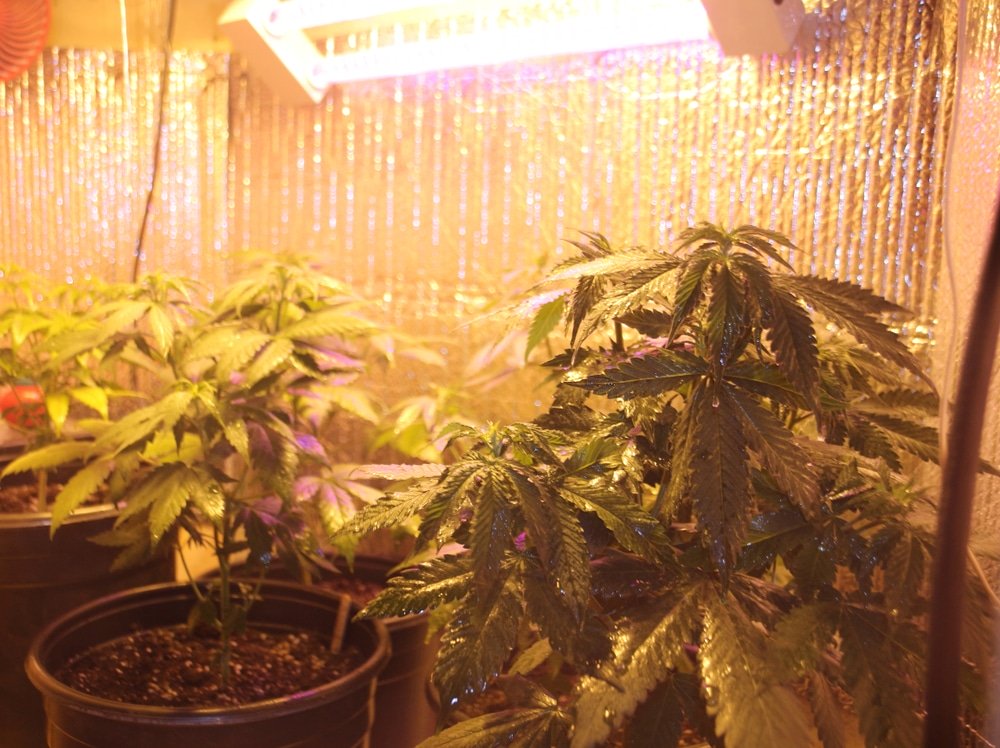
Ensuring proper nutrient availability and balance
Nitrogen (N), phosphorus (P), and potassium (K) are the three main nutrients that cannabis seeds need to grow.
Seedlings require pretty low nutrient levels, and you should only feed them when they develop cotyledons. To protect them, add beneficial bacteria and good fungi to keep them strong.
Maintaining optimal watering and environmental conditions
Only water the soil when it’s dry to the touch, as overwatering is a common issue with seedlings. If you’re growing indoors, maintain optimal temperatures and humidity levels. Keep the grow area clean to prevent harmful bacteria or mold.
When you’re growing outdoors, ensure your location meets the proper climate needs. If not, it’s best to keep the seedlings indoors until they’re strong enough to tolerate different weather conditions.
Implementing routine monitoring and care
Studies show regular screening is the key to healthy cannabis. Check the RH and temperatures at least once a week in your grow room. Inspect the quality of the leaves. They should be green, firm, and bendable.
Recognizing when to start fresh
Sometimes the damage is too deep to repair and it’s best to get rid of the affected seedlings and re-start the process. It’s crucial to know the signs revealing its time to give up on them.
Evaluating seedling viability
If you’ve treated the seedlings and they’re still showing yellowing leaves, drooping foliage, or other symptoms, it’s time to throw them out. They’ll eventually stop growing and die so it’s best to let them go.
Assessing the pros and cons of continuing with affected seedlings
If you choose to treat affected seedlings you’ll learn valuable lessons in cannabis cultivation. It’ll also save you from having to invest in a brand-new batch of seeds.
If you choose to throw them out and start anew, it saves you the time of treating delicate seedlings.
Learning from past experiences for improved future grows
Whether you keep the affected seedlings or throw them out, it teaches you lessons to apply to your next grow. Your future plants will be grateful for their improved environment and care.
Weed seedlings turning yellow can be remedied
If your weed seedlings are turning yellow, it can be caused by pests, humidity, overwatering, stress, and other factors. The first step is to diagnose the problem by looking at the signs followed by treating it accordingly. Sometimes it can be too late and you’ll have to start a new batch. See this for the learning opportunity it presents.
The most important factor in preventing issues with cannabis is to buy high-quality seeds. The Seed Fair has a range of options that come from stable genetics and are cultivated with utmost care. Shop our top-shelf selections today.


